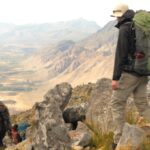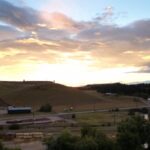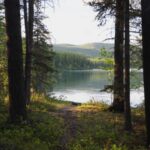The Blackfeet Nation represents one of the most historically resilient and culturally powerful Indigenous communities in North America. Known as Niitsitapi, or “Original People,” the Blackfeet possess deep ancestral ties to the northern plains of Alberta and Montana.
The name “Blackfoot” or “Blackfeet” varies by usage, with “Blackfoot” referring to individuals or the broader ethnic group and “Blackfeet” often denoting the U.S. tribal nation.
Spanning centuries, their history reflects adaptation, resistance, and cultural brilliance rooted in place and spiritual identity.
Origins and Early History
Archaeological findings and genetic research trace Blackfeet ancestry back around 18,000 years, placing them among the earliest peoples of the North American continent.
Their presence is marked by both physical evidence and oral traditions that speak of sacred beginnings and an enduring bond with natural elements.
Creation stories identify places in present-day Alberta and Montana as points of origin. These stories connect families to rivers, plains, and mountains as if to kin, not as property.
Blackfeet ancestors practiced a nomadic life shaped by the movements of bison herds.
@nativeamerican.history The history of the Blackfeet Tribe. Native American Native American Native American History Native American Insustice Native American Land Native American Chiefs Native American Warriors Native American Reservations Native American Land Pontiac Native American Native American Women Native American Mother Native American Women Heros Native American Names Native American Singing Native American Music #nativeamerican #nativeamericans #americanindian #americanindians #nativeamericantiktok #nativeamericanheritage #nativeamericanhistory #nativetiktoks #blackfeet #blackfoot #blackfeetpride #blackfootpride #blackfeettribe #blackfeetnation ♬ original sound – NativeAmerican
- Meat for sustenance
- Hides for clothing and shelter
- Bones for tools and weapons
- Tendons for sinew and sewing
Fire ecology became a vital tool. Intentional burning encouraged plant regrowth and lured bison back to renewed pastures. According to one tradition, “Blackfeet” refers to moccasins darkened by ashes after prairie fires set to manage herds.
The Blackfoot Confederacy
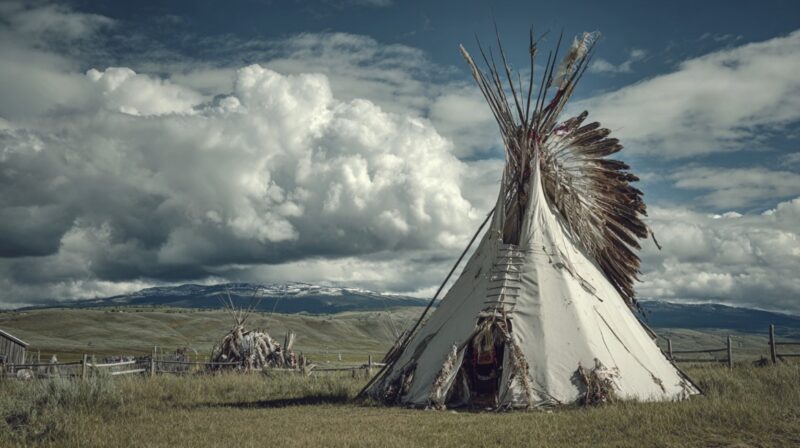
Blackfoot Confederacy united four distinct but interrelated groups: Siksika (Blackfoot), Kainai (Blood), North Piikani, and South Piikani. These groups maintained independence but functioned as a cohesive alliance based on shared language, kinship, and spiritual duty.
- Siksika, Kainai, and North Piikani primarily in Alberta
- South Piikani located within Montana
Each group maintained sovereignty while uniting for:
- Mutual defense
- Ceremonial gatherings
- Trade
- Intermarriage
Leadership emerged through merit—based on courage, wisdom, and generosity—not inheritance. Elders and respected individuals helped maintain peace and social order.
All members spoke dialects of an Algonquian language, enabling communication and oral knowledge transfer between regions. Ceremonial songs, legends, and seasonal instructions circulated across groups, reinforcing collective identity.
Nomadism defined the annual cycle. Groups migrated with bison herds and reassembled at designated times:
- Summer: large gatherings for trade and ceremonies
- Winter: dispersal into smaller family camps for shelter and survival
Ceremonies such as the Sun Dance tied spiritual renewal to communal strength. These gatherings blended practical and spiritual life, reinforcing unity across distance.
Culture and Social Organization
Cultural life emphasized reciprocity and stability between people, animals, and natural cycles. Families lived in tipis made of bison hides stretched over wooden poles—structures designed for portability and suited for quick assembly.
Buffalo hunts formed the heart of social coordination. Success required collaboration between camps, with defined roles based on experience and capacity.
Gender balance shaped community life. Responsibilities included:
- Women: food preparation, clothing, domestic structure, and spiritual preservation
- Men: hunting, defense, ceremonial roles, and diplomacy
Each role was vital, with authority tied to service rather than dominance.
Clan identity carried obligations and privileges.
View this post on Instagram
- Determined marriage eligibility
- Defined ceremonial roles
- Structured conflict resolution
Societal subgroups provided more layers of organization:
- Warrior societies ensured discipline and group protection
- Religious orders managed ceremonies, sacred items, and ritual practices
- Women’s groups preserved oral traditions and community memory
Ceremonial life guided seasonal activities. The Sun Dance represented sacrifice, healing, and unity. Other rites honored animals, celestial cycles, and ancestors.
Contact with Europeans and Settler Encroachment
Initial European contact brought material transformation. Traders introduced new tools, horses, and firearms, which immediately reshaped hunting and warfare. Horses increased mobility, and firearms shifted the dynamics of intertribal conflict.
Benefits of trade came with growing dependency on foreign goods and disrupted food sources.
New weapons and horses allowed the Blackfeet to defend and expand territory. Clashes with neighboring tribes like the Crow and Shoshone escalated, as each nation fought for access to bison-rich areas.
Disease soon followed trade. Smallpox epidemics killed thousands, often wiping out entire camps before settlers arrived. Loss of elders damaged oral continuity and social knowledge.
Government policies soon targeted identity itself. Schools and missions worked to erase language and ceremony. Children were taken, elders were silenced, and spiritual practices were outlawed. Families fought to preserve heritage in secret.
Ecological collapse followed federal aggression. Commercial bison hunting, encouraged by the government to starve tribes into submission, nearly exterminated the animal. Without bison, starvation spread rapidly.
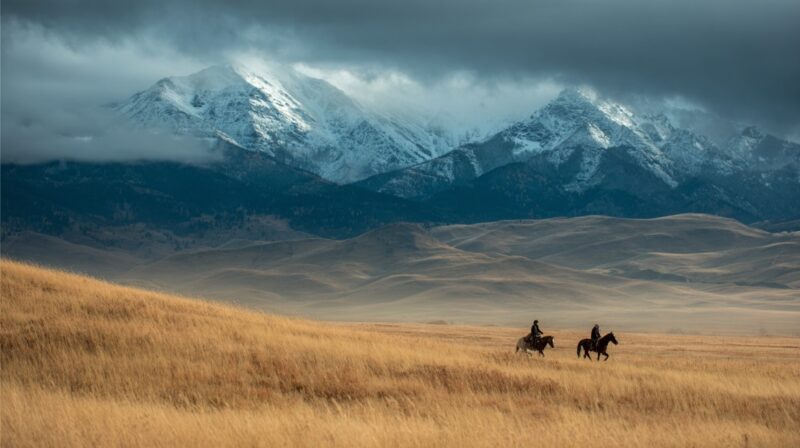
Treaties and Loss of Land
Colonial governments used treaties to redraw Indigenous existence. Agreements, often signed under duress or through manipulation, reduced access to sacred places and removed legal recognition of ancestral stewardship.
One of the earliest formal agreements, the 1855 Lame Bull Treaty, outlined a reservation in Montana.
- Vague language
- Lack of enforcement
- Continued settler trespassing
- Shifting federal interpretations
In 1888, the so-called Sweet Grass Hills Treaty forced the surrender of sacred sites. Blackfeet leaders denied agreeing to cede these spiritually vital lands, but government agents claimed otherwise.
Another blow came in 1896 with the cession of mountain lands along the Rocky Mountain Front.
These lands, later designated as Glacier National Park, were removed without true consent. Blackfeet lost access to hunting grounds and spiritual spaces essential to their cultural cycles.
- Food rations were withheld or spoiled
- Medical help failed to materialize
- Schools prioritized erasure rather than education
- Corruption among Indian agents created systemic suffering
Loss of land disrupted far more than geography. Displacement fractured ceremonial practices, food systems, and familial cycles built over millennia.
Summary
Blackfeet Nation continues to exemplify endurance in the face of centuries of upheaval. Despite disease, forced displacement, ecological destruction, and aggressive assimilation, cultural knowledge, language, and ceremony remain alive.
Elders still pass down oral traditions, spiritual practices have reemerged publicly, and youth reclaim ancestral identities with pride.
Modern life presents new challenges, economic development, climate instability, healthcare inequities, but also opportunities. Tribal colleges, language revitalization programs, and land stewardship initiatives reflect a commitment to cultural renewal anchored in ancestral wisdom.
Hello, my name is Harper Barton. The only thing I love more than travelling is writing about it. Sounds strange doesn’t it? But yeah, I adore writing and sharing my experiences about what I have experienced during my travels. Since I am a person who loves being a part of the community, I often write about local festivals with the goal of popularizing outside just small communities they come from.



